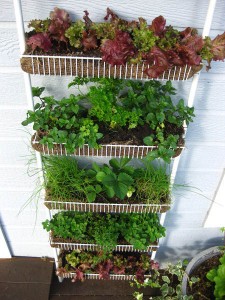THIS IS THE BEST I HAVE EVER SEEN.
The middle has red worms to make "worm dropping tea".
THIS is the way to go.
Tip my hat to this site and bless them for sharing all their data!
gardentowerproject
Please visit this site for even more data.

Initial set-up and planting:
Add a soil mixture (6-7 cubic feet) that is organic if possible. Very light and lofty mixes are available that will do a great job while only adding 20-30 pounds of weight (dry).
Remove a handful of soil from the pocket to be planted (when planting starts). Plants can be grown from seed in the Garden Tower as well, but special care must be taken to maintain moisture in each pocket without disturbing the seed and soil (frequent bottle misting is an effective method).
Straighten bound plant roots and insert starter plant into pocket.
Replace removed handful of soil and use it to support the new plant.
Lightly press soil around the plant stem to bolster root zone and prevent soil loss during watering.
Gently water each pocket 1-2x daily for 7 days or until plants develop new roots and appear stable.
Watering from the top is all that is necessary beyond the first week. Adding some mulch, leaf littler, coir, or other fibrous material to the top surface will help reduced evaporation and prevent soil disturbance making watering even easier.
Add 2 or more pounds of compostable kitchen scraps to the compost tube prior to adding worms. We suggest adding your worms after you have been adding kitchen scraps for at least 3 days, this provides time for decay which is necessary for the worms to feed. Adding some shredded cardboard or newspaper periodically (1 part paper to 4 parts kitchen scraps) will help provide the carbon:nutrient balance for the worm community to thrive.
Add 2 to 6 ounces or about one cup of healthy worms. Red wigglers and nightcrawlers will work in companion to maximize productivity and nutrient cycling in the Garden Tower. Red wigglers and nightcrawlers can be found locally at very low cost in most communities (outdoor sporting stores, bait shops). However, numerous online outfits will deliver healthy worms to your door.
The planted Garden Tower after one week!
The planted Garden Tower after exactly 14 days!
50 Plants + Composting in Four Square Feet!
The Garden Tower grows plants vertically, enabling you to grow 50 plants in a very small space -- the ultimate square foot garden with integrated composting! Most container gardens only allow planting on the top. The Garden Tower has 45 openings around the outside and space for up to 5 taller plants on top, resulting in an impressively bountiful harvest. Along with the top, side planting pockets are large enough to accommodate compact root vegetables such as turnips, carrots, and radishes.














































